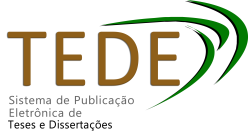| Compartilhamento |


|
Use este identificador para citar ou linkar para este item:
https://sistemas2.uespi.br/handle/tede/1943| Tipo do documento: | Dissertação |
| Título: | The last voyage of the Demeter: uma tradução intersemiótica de Drácula, de Bram Stoker |
| Título(s) alternativo(s): | The last voyage of the Demeter: an intersemiotic translation of Dracula, by Bram Stoker |
| Autor: | Silva, Denise Sousa da  |
| Primeiro orientador: | Bezerra Filho, Feliciano José |
| Primeiro membro da banca: | Gomes, Carolina de Aquino |
| Segundo membro da banca: | Silva, Ruan Nunes |
| Resumo: | A adaptação cinematográfica de obras literárias configura-se como um processo recorrente, no qual ocorre a transposição de signos entre sistemas semióticos distintos. A partir desse cenário, esta pesquisa parte da hipótese de que The Last Voyage of the Demeter (Øvredal, 2023) atualiza e ressignifica o mito do vampiro, representado originalmente pelo personagem Drácula (Stoker, 1897), por meio da tradução intersemiótica, sem romper com seus elementos essenciais. O objetivo central da investigação é analisar como a imagem literária do vampiro é traduzida e recriada em linguagem cinematográfica, considerando as categorias icônicas, indiciais e simbólicas da tradução intersemiótica, conforme proposto por Júlio Plaza (2003), com base nos conceitos de Roman Jakobson (2008) e na semiótica peirceana (2005). A pesquisa, de natureza qualitativa e caráter bibliográfico, fundamenta-se em uma análise fílmica de The Last Voyage of the Demeter, articulada às reflexões teóricas sobre literatura e cinema presentes em autores como Linda Hutcheon (2013), André Bazin (1991), Robert Stam (2003, 2008) e Gilles Deleuze (1983). No campo da semiótica e da tradução intersemiótica, o estudo apoia-se nas contribuições de Charles S. Peirce (2000), Lucia Santaella (1996), Júlio Plaza (2003) e J. Teixeira Coelho Netto (2010), entre outros. Os resultados indicam que o filme não apenas traduz, mas reinventa o signo estético do vampiro, atualizando-o segundo as transformações culturais contemporâneas. Ao integrar tradição e inovação, a obra evidencia o potencial criativo da tradução intersemiótica como forma de recriação narrativa e estética, reafirmando a permanência do mito de Drácula no imaginário popular |
| Abstract: | The cinematic adaptation of literary works is a recurrent process that involves the transposition of signs across distinct semiotic systems. Within this context, this research is grounded in the hypothesis that The Last Voyage of the Demeter (Øvredal, 2023) updates and re-signifies the vampire myth, originally represented by the character Dracula (Stoker, 1897), through intersemiotic translation, while preserving its essential elements. The central objective of this study is to analyze how the literary image of the vampire is translated and reimagined through cinematic language, using the iconic, indexical, and symbolic categories of intersemiotic translation proposed by Júlio Plaza (2003), based on the theories of Roman Jakobson (2008) and Charles S. Peirce’s semiotics (2005). This is a qualitative, bibliographic study that conducts a film analysis of The Last Voyage of the Demeter, engaging with theoretical perspectives on literature and cinema from authors such as Linda Hutcheon (2013), André Bazin (1991), Robert Stam (2003, 2008), and Gilles Deleuze (1983). In the fields of semiotics and intersemiotic translation, the study draws on the works of Charles S. Peirce (2000), Lucia Santaella (1996), Júlio Plaza (2003), and J. Teixeira Coelho Netto (2010), among others.The findings suggest that the film not only translates but reinvents the aesthetic sign of the vampire, updating it in light of contemporary cultural transformations. By integrating tradition and innovation, the film demonstrates the creative potential of intersemiotic translation as a form of narrative and aesthetic recreation, reaffirming the enduring presence of the Dracula myth in popular imagination |
| Palavras-chave: | Drácula Literário Tradução Intersemiótica The Last Voyage of the Demeter. Literary Dracula Intersemiotic Translation |
| Área(s) do CNPq: | LETRAS::LITERATURA COMPARADA LETRAS::TEORIA LITERARIA |
| Idioma: | por |
| País: | Brasil |
| Instituição: | Universidade Estadual do Piauí |
| Sigla da instituição: | UESPI |
| Departamento: | Centro de Ciencias Humanas e Letras |
| Programa: | Programa de Mestrado Profissional em Letras |
| Citação: | SILVA, Denise Sousa da. The last voyage of the Demeter: uma tradução intersemiótica de Drácula, de Bram Stoker. 2025. 114 f. Dissertação( Programa de Pós-Graduação em Letras - PPGL) - Universidade Estadual do Piauí, Teresina, 2025. |
| Tipo de acesso: | Acesso Aberto |
| URI: | http://sistemas2.uespi.br/handle/tede/1943 |
| Data de defesa: | 2025 |
| Aparece nas coleções: | Programa de Mestrado Profissional em Letras |
Arquivos associados a este item:
| Arquivo | Descrição | Tamanho | Formato | |
|---|---|---|---|---|
| Dissertação completa.pdf | 2,16 MB | Adobe PDF | Baixar/Abrir Pré-Visualizar |
Os itens no repositório estão protegidos por copyright, com todos os direitos reservados, salvo quando é indicado o contrário.




